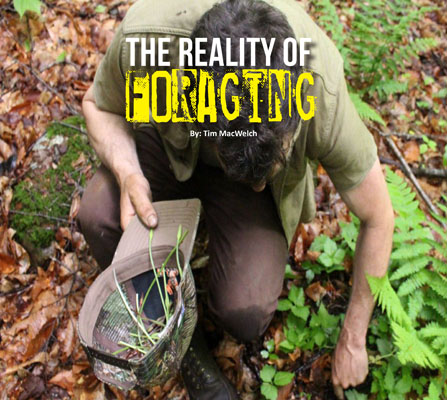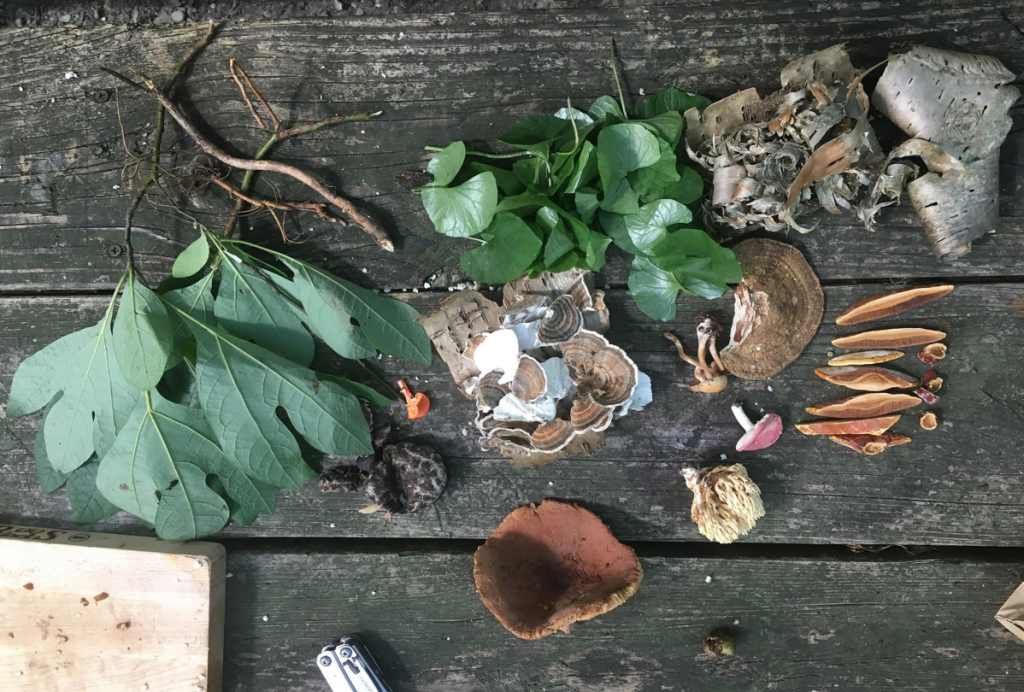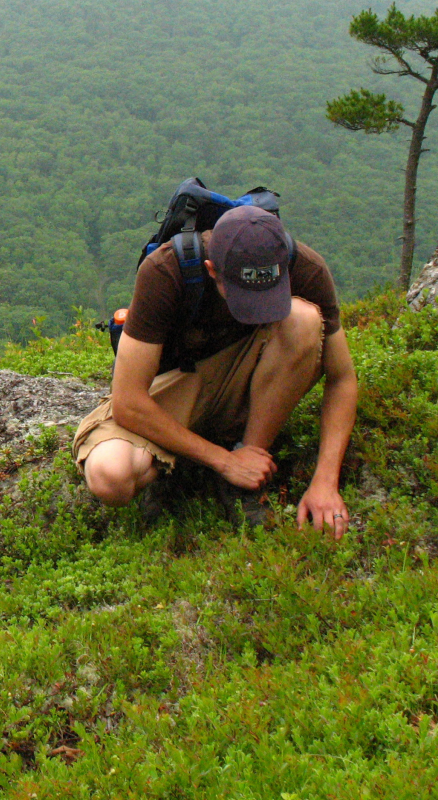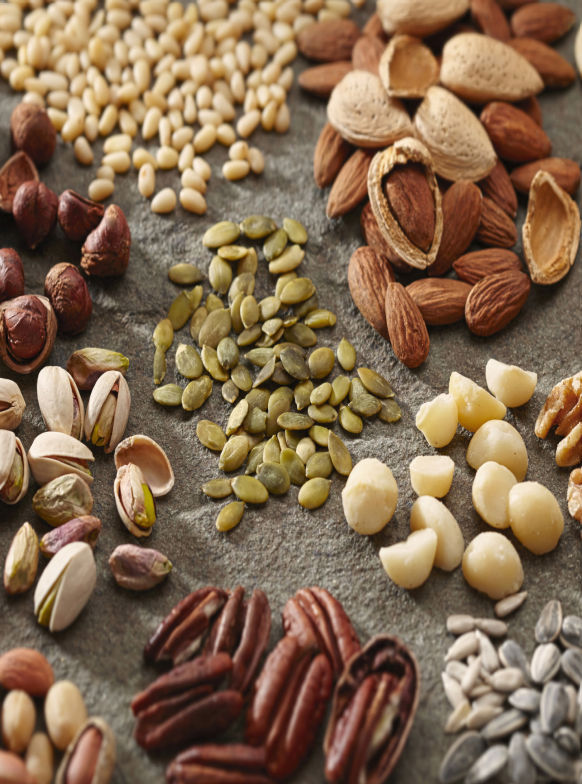SDN has moved again!
Subscribe to our RUMBLE channel

From the perspective of the average person today, it’s not just the survivalists, Navy SEALs and Girl Scouts who can subsist on twigs and berries when they get lost in the wild. Hell, we’re all supposed to be able to do it! Look at our beloved action flicks (particularly the survival themed movies) and even video games – these have drilled the myth of foraging anytime and anywhere into the pop culture zeitgeist. Even classic Dungeons & Dragons had a rule stating that a full-time forager can sustain 4-16 individuals (including himself) with each day of foraging (pretty damn impressive).
But enough about movies and games, let’s talk about the real world. How many edible plants do you really think are out there? Is there even a shred of truth to the idea that you could survive by foraging from the plant kingdom? And long could you last by being a weed eater?
Many of our modern forms of entertainment have depicted this “perfect” version of nature – a place where our heroes can easily forage for their necessary nutrition, regardless of season or climate! But is there such a time and place? Let’s explore the reality of foraging.
The Disclaimers
I teach foraging and write about it for part of my livelihood. That may seem like a conflict with some of the things I’m about to say, since I’m about to poke a few big holes in the art of gathering wild plants for food. But hang in there until the end – and hopefully you’ll grasp the irony and more importantly, you’ll have some takeaways.
Furthermore, foraging can be a dangerous endeavor – particularly for beginners. You may mistake a deadly plant for a wholesome one, or you may have a rare allergic reaction to a widely tolerated edible plant. Go slowly, triple-check everything, eat just one new plant per day, learn from the experts and remember that some blogs and websites provide wrong information (researching in reputable books is best).
Hunting
I meet people all the time who have a different “plan B” for getting food. They’re usually the mouthy fools at trade shows. When I mention foraging to them, they say “Hell no! I ain’t eatin’ no weeds. I’ll just shoot a deer.” Well, that’s certainly a possibility in a wilderness setting, as long as your ammo holds out. And you might get lucky during the first few weeks of a collapse, but after that – I doubt there’ll be anything left alive to hunt.
Take a look at your county’s deer population per square mile and then look at the human population per square mile. If just 25% of the human population engaged in hunting, how long do you think those deer (and other animals) will last? The correct answer is not long at all. We can see a scary example of the results of over-hunting by desperate people when we look at the Great Depression. In the 1930’s, whitetail deer were virtually extinct in my home state of Virginia.
And those folks were in better shape than we are today. There were fewer people back then and 50% of them were farmers (they knew how to grow food). Even then, shortly after the depression started, the deer were all gone. It took almost 40 years for those animals to return to a stable population in the state. So here’s another big takeaway. Unless you’re just pretending to take survival seriously, you’d better learn to eat your weeds!
Now that I’ve dispelled your illusion of providing tons of game meat for your family after an EMP or some other “End Times” scenario, let me shatter your fantasy about gathering enough plants to survive, anywhere and anytime.

The Season
One of the three major issues that influence your success as a forager is the season in which you are collecting. Naturally, winter can be a bleak time with so many of the plants dead or frozen. But spring may not be the treasure trove you imagine. Even though new green growth is bursting from every herbaceous and woody plant around you, there’s a big problem. All of this fresh plant growth is mostly water with very few calories. It’s like getting chained up in a field of iceberg lettuce (with no dressing or bacon bits). You could starve to death with a belly full of watery leaves. Spring was so tough that many cultures once called it “the starving season.”
So what’s the “right” season to get lost in the woods? Summer edible plants can feed you in certain habitats, but fall is usually the best time for foraging due to the tree nuts, seeds, berries and other calorie dense foods that are available in autumn.
The Location
The second major issue in foraging is your location. This can be strike two, if you’re in a bad location, or it can mean an abundance of diverse foods, if you’re in a choice spot. Generally speaking, sunny areas with ample water will give you the most diversity of edible plant life and bigger plants. The dark jungle or forest may not have much food, unless it’s time for fruit and nuts. So if you want to eat, head to a sunny area. Swamps, fields, river edges and the edges of a forest are usually your best bets. You could be the best forager on earth, and come back to camp with very little when the plants simply aren’t available. I’ve said this for years in my classes, and I’ll say it again. There’s always something to eat, but it may not be as much as you want or need.

The Talent
If you’re trying to hustle enough food out of the land to survive, you’ve got to have the skill for it. The third make-or-break issue in foraging is talent. This is just like any other skill. You’ll need an aptitude for it, you’ll need training from someone with experience and you’ll need to practice the skill. You don’t get good at shooting by buying a gun book and setting it on the shelf, and you can’t learn foraging by shoving a field guide in your bug out bag and ignoring it. There’s no secret to success in this pursuit and there are no short cuts. It takes years of hard work and practice to become an effective forager.
So here’s a summation of all three of these issues.
Once you have the skill of foraging under your belt, and you’re in the right place at the right season, then, you can live off wild edible plants until they run out. Under other conditions, you’ll likely just have tea, salads and a few snacks. These can give you a sensation of fullness and the illusion of success, but you’ll be losing weight rapidly and it’s not a sustainable option for survival.
The Basics
The first thing you’ll need to do before popping a wild plant into your mouth is to identify it with ZERO doubt. This certainty should come from a place of experience. Training from an expert is the best option. VERY thorough book studies can get you there too, though it takes a lot longer (and not everyone is wired to learn this way). But don’t ignore the books.
You’ll want 100% positive identification of the plant species before you throw it into the stew pot. I recommend taking “Peterson’s Field Guide to Wild Edible Plants” as a reference. This small book is packed with solid information, and it’s a backpack-friendly size. Yeah, I wrote a foraging book too. But in all honesty, Peterson’s beats the pants off my book. Once you’ve made a positive ID of the plant with a reputable field guide, here are a few more basics to consider.
– Learn about the poisonous plants in your area, so you can avoid them.
– Wash any plants that you are going to eat raw, to rinse off bird and bug poop. Cooking your plants is an even safer approach.
– Get off the beaten path to collect. Roadsides, parking areas, dumping grounds and conventional agricultural areas may have contaminated soil or plants that have just been sprayed with something nasty.
– Eat only small amounts of plants that are new to you, one per day.
– Learn which plants should be eaten in moderation.
– If you have any doubts about the plant or plant part, DO NOT eat it!
The Heavy Hitters
Nutrient density is the name of the game when it comes to foraging for survival. Learn to identify and use the following wild plant foods, and you’re got a shot at having a full belly and ample calories.
Tree Nuts
These are the calorie powerhouses of gathering. Even the lowest calorie tree nuts are packed with macronutrients (fat, protein and carbs), but not every tree nut wants to be your friend (buckeyes and horse chestnuts are poisonous). Rule out the bad nuts, and most of the other common nuts growing wild in North America are suitable as people food. In a “nutshell,” if there are nuts, you can live off of wild plants.

If there aren’t, you might not make it on wild plants alone. Tree nuts are usually fully formed and ready to eat in early fall. Some may continue to be edible through the winter (even into spring). Don’t eat nuts that are moldy, decayed, riddled with insects or nuts that have a fermented smell. The nut meat should look and smell “right” for that species. Some are ready to eat right out of the shell, like hickory nuts, walnuts, pine nuts, pecans, beech nuts and hazelnuts.
Hickory nuts are the top pick for food, as shelled-out nut meats contain over 190 calories per ounce! Don’t forget about acorns. They are one of the most plentiful tree nuts throughout the country, and even though they require special processing, they are worth the trouble. Just one pound of acorns can provide over 2,000 calories.
How to Process Acorns
To make them palatable people food, crack them into little pieces – discarding the shells and caps. Place the broken nut chunks into a pot of warm water and let them soak for an hour or two. This will remove some of the bitter and stomach churning tannic acid.
Save the tea-colored water you dump off the first soaking, it’s an excellent skin wash for inflammation, rashes, sores and other irritations. Repeat the “soak and pour off” process until the bitterness is gone. This may take a few hours or days, depending on the species of oak and the amount of tannic acid those nuts contain.
Seeds
Almost as nutritious as nuts, edible seeds can often be found in the summer and fall. Amaranth grows wild in fields and fallow farmland. One cup of the shiny black seeds contains 716 calories, 26 grams of protein, 30% of your daily calcium and almost your full day’s requirement of iron. Other edible seeds include lamb’s quarters, wild rice, numerous grasses, curly dock and dozens of other species. Seeds are best prepared when ground into meal and boiled as porridge, since their tough seed coat may not be dissolved by your digestion if eaten whole.
Roots
After nuts and seeds, roots are the next best bet for feeding your tribe. Cattail rootstocks contain a white starch that is 150 calories per cup. Burdock root needs to be boiled a few minutes in different changes of water (to remove bitterness), but then it provides 84 calories per cup and 14 percent of your daily allowance of Vitamin B6. Wild carrots can be eaten too, but watch out! They have two very deadly look-a-likes, poison hemlock and fool’s parsley. Because of the risk, I don’t recommend wild carrot collection for beginners.
Berries and Fruit
These are some of the tastiest wild edible plant parts. Most wild edible fruits and berries are delicious when they are fully ripe, which occurs between May and December (depending on your latitude and the species). Wild strawberries and blueberries ripen first, then come the mulberries, blackberries and raspberries. Mulberries, for example, provide 60 calories per cup, with 85% of your daily requirement of Vitamin C and 14% of your daily Iron. Just make sure they are ripe and sweet, because under-ripe mulberries can lead to serious reactions. Cherries, paw paw fruit and many other berries and fruits ripen from mid-summer into the fall. You’ll even find late fruits like rose hips and persimmons, typically at their best after the first frost and into early winter.
The Bad Guys
Just to remind you, we already mentioned buckeyes and horse chestnuts as poisonous nuts, but they’re not the only bad guys out there. You’ll also encounter poisonous seeds, roots, berries, fruits, leaves and other plant parts. So don’t get the idea that you can eat everything out there. Learn to identify each food species and each dangerous plant in your area.
Final Thoughts
So there you have it. You can survive off wild plants, while they last, if you are in a favorable location and season and you know what you’re doing. Take away any one of those positive features, and your chances of collecting enough plant foods to survive will drop accordingly.
Remember the factors that you control – your knowledge and experience. When you take the time to learn more of your local edible plants, you’ll have more chances of running across these plants. And the further you can roam, the more likely you will be to spot areas with food that you haven’t harvested before. There’s a reason that hunter/gatherer cultures were largely nomadic, it’s the only way to get enough to eat over the years and decades.
So take the opportunity to perform hunting and trapping, along with your gathering, but don’t rely on hunting or trapping as your only back-up plan.
Here’s wishing you a fat little rabbit or squirrel in the stew pot along with your weeds. Good luck!
This article was originally published in Survival Dispatch Insider magazine Volume 2 Issue 7.
=====
Become a Survival Dispatch Insider …
We bring together survival enthusiasts and preppers to share skills and knowledge, so you can enhance your preparedness for emergencies and ensure the safety of you and your community.
The Results You’ll Get …
Our community, courses, and memberships are pretty special. We focus on the ways it will make a huge difference in your life.
Here are a few of the things you’ll be able to do as a member of Survival Dispatch Insider …
1) Improve your emergency preparedness by learning survival skills and strategies from experienced preppers.
2) Build lasting connections with like-minded individuals that share your passion for safety and readiness.
3) Access a wealth of knowledge and resources to assist in protecting you and your community during unexpected situations.
Click HERE to get started.
=====
